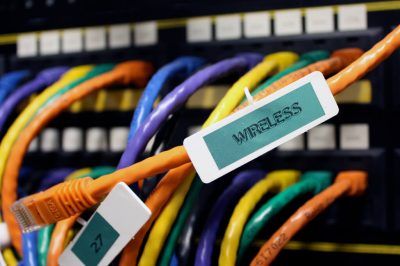
Right off the bat, readers should know that a perfectly secure wireless system is a pipe dream. In other words, in a world that is governed by complex gravitational laws, it simply does not exist.
So what’s the alternative then? Surely it can’t be leaving yourself open to hackers and spying agencies all the time?
Well, there is no hiding the fact that the best you can hope for is a security that is sufficient. In other words, good enough to protect you from the various threats that are present in the online world.
As is the case with getting rid of mosquitos, if you can protect yourself better than the guy next to you then you’re more or less safe in the online world of hackers and marketing agencies.
This shouldn’t sway you away from the fact that the chances of you getting attacked by a hacker are pretty reasonable if you’re not careful.
But let’s just stop there for a moment to clear something up.
It is one thing to warrant interest from hackers and it is totally another to actually get attacked by one. To put it another way, you could become a person of interest for many hackers but only a few, if any, would move forward to spend resources along with time to hack your machine.
Among many other factors, it also depends on the kind of data your holding. If you have a lot of sensitive data on your computer then the chances of an attacker’s interest evolving into an actual attack increase exponentially.
Moreover, it also depends on how hard you make it for attackers to hack into your machine. If you have vigorous defenses in place then, of course, most hackers would be turned off by that.
Lucky for us and all end-users, there are a lot of security measures you can take to secure your wireless router to make sure that a hacker is not able to detect your wireless network.
All your efforts of securing your wireless router and wifi network should start from the device’s configuration panel.
Let’s make sure your internet connection does not become an easy prey to cyber criminals.
Table of Contents
Protecting Your Wireless Router The Beginner Way
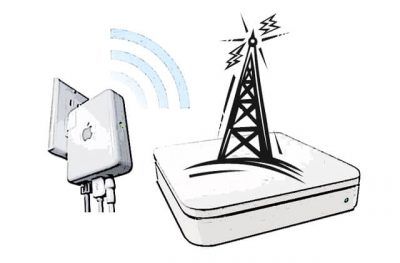
First of all, know that the general guidelines to protect any wireless router are more or less the same for any kind of wireless routers.
Of course, the details would vary from brand to brand, but from an overall perspective, the principles remain the same.
So don’t worry if your wireless router doesn’t have the exact same options that we’ll mention in his super guide. All you have to do is to do a bit of guesswork and follow along to secure your wireless router and wifi network from cyber criminals.
If it wasn’t clear enough already, what we really want to tell you is that no one will ever hold your hand every step of the way in securing your wireless router and wifi network.
You’ll have to do a bit of digging yourself in order to stay safe from the prying eyes of hackers and government agencies.
So don’t expect the exact settings that need to be changed in order to protect your wireless network and wifi network.
Use this awesome guide as a roadmap to your online security.
With that said, this super guide will give you enough pointers to push you in the right direction.
If it happens that your wireless router has an advanced configuration menu then you will want to visit this guide again and again to make sure that you deal with all the settings in an appropriate way.
So far so good right?
Let’s get into the nitty-gritty then.
How To Have Secure Login Credentials
Needless to say, to start the whole process off you’ll need the login details to your wireless router. Your wireless router manufacturer or the guy that set up your wireless router probably gave you a username and password for the wireless router device.
It is totally possible that you may have to look for login details at various other places such as the retail outlet from where you bought the wireless router or even the website for your wireless router’s brand and model.
And while you’re at it, it is always a good idea to ask your internet service provider for help on this issue.
Basically, it depends on where your wireless router came from. Some ISPs do provide wireless routers with broadband internet connections for free while others don’t. Know which category you fall into and move forward from there.
Oh yeah, before we forget, the login details of your wireless router might also be printed on the bottom of your wireless router device itself.
Again, it all depends on your individual situation. Your login credentials, as mentioned before, is a good start to gauge how secure your wireless connection to the internet really is.
So, depending on how secure your login details are, you have probably hit the first security problem with your wireless router.
That problem, that most cyber criminals bank on, is that many wireless routers if not all ship with the same default username and password.
Usually, the username is admin while the password is along the lines of either admin or 123456.
So what are you supposed to do in this situation?
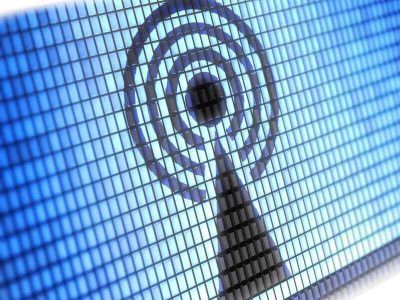
Well, first, you’ll need to figure out how to change your wireless router’s username and password and you’ll need to do this quickly because every second that passes is a second lost against protecting yourself from cyber criminals.
You must pick a new password that is reasonably difficult for others to guess but not too difficult for you to remember. Make sure your password is complex and hard at the same time.
Longer passwords are generally better and passwords that have capital letters along with small letters, numbers and special characters tend to be more secure than a regular password such as “dadadadadad.”
Don’t forget to change the username as well. No need to overthink your username. Pick one that doesn’t reveal your full name, birthday or social security number. Yes, some people do name their wireless router after their real name and end up paying the price when they make it easier for cyber criminals to confirm the target.
Configure The Wireless Router’s Firmware
Again, a very important step in your quest to achieve the maximum amount of online security for your wireless router and wifi network (we’ll come to that a bit later in the guide).
You should start you efforts by first checking for any and every Windows update that might be available for your wireless router’s firmware. If you have then download the firmware update and apply it immediately.
The next thing you should focus on is your antivirus. It is really hard to differentiate between the top antivirus software these days but the problem almost never occurs because your antivirus software wasn’t good enough.
The problem always takes place because you didn’t update your antivirus software to protect you against the latest viruses. So if your antivirus update is due then download and install it right now.
Do we really need to spell it out that you need to make a habit out of updating your operating system and antivirus software as soon as the relevant download is made available?
In short, if there is an option to download some update, take it as soon as possible.
Your wireless router’s firmware comes under the same general rule. If there are any updates left for your wireless router then go download (and install) them at your earliest convenience.
Generally speaking, if you have bought your wireless router from a local shop or have received the wireless router from your internet service provider then there is a good chance that by the time the wireless router reaches your doorstep it’s firmware is already out of date.
You must update the wireless router’s firmware the first time you pick it up from its box. Remember, it doesn’t matter which brand of wireless router you buy, they are all, to some extent, vulnerable to cyber criminals who are always looking for ill-disciplined end users.
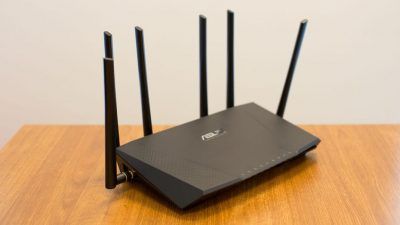
Just to be super specific here, don’t think that if you have a Belkin wireless router or even a Cisco wireless router, you’ll be safe from hackers even if you don’t update wireless router’s firmware the first time you hold it in your hands.
Fortunately for all of us, we live in a world where some (and definitely not all) wireless router manufacturers are responsible entities and hence we’re likely to receive firmware updates that thwart any hacker attempts to gain unsolicited access to our system on the manufacturer’s official website.
What we really want to teach you here is that don’t be content with just a single update to your wireless router’s firmware the day you unpack the wireless router from its box. Take it up a notch and distinguish yourself from the crowd by regularly checking the manufacturer’s official website for any future updates.
Checking for firmware updates on a monthly basis is an acceptable start. Needless to say, never update your wireless router’s firmware from unofficial sources no matter how many authoritative magazines have mentioned their name in their publications.
Always download your wireless router’s firmware updates from the manufacturer’s official website. There are just too many cases where bogus websites have ripped users off by hosting fake updates. Remember that cyber attack, though uncommon, are more common than you may think.
How To Handle Encryption Issues With Your Wireless Router
Again, you should be thankful to most wireless router manufacturers because normally wireless routers do give users plenty of options regarding encryption methods and ways to employ them in order to guard their online security.
Of course, you don’t need to spend too much time, or much time at all, to understand how different encryption methods work. But it would probably be helpful for you if you know that not encryption method are created equal.
Just to take an example, the WEP encryption method is a definite no-no. We don’t want to waste space writing about how bad this encryption method is. It is best that you take our word and stay away from WEP, forever. Having a WEP encryption is like having no encryption at all. That should be enough for you to dismiss this encryption option whenever you see one.
If you have been in the wireless router security game for long, you might be wondering how does WPA stack up against something as bad as WEP?
The simple answer is that the WPA encryption is definitely better than WEP. The only caveat to that statement is that, the WPA is just slightly better than WEP encryption.
What you need is WPA2 encryption. And while WPA2 isn’t watertight either, it is the best among the currently available options.
So make your that your wifi connection is always configured to use WPA2 instead of WPA or WEP.
What About Automatic Updates
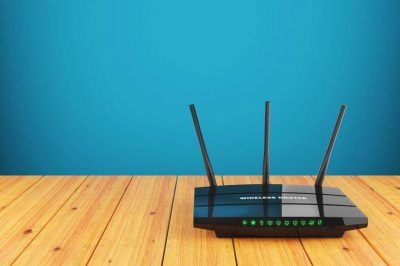
This is there it gets really tricky. One the one hand, as we indicated earlier, it is better to always opt for automatic updates as far as your wireless router is concerned. But wouldn’t it be better if you knew the exact moment when your wireless router device communicates with its manufacturer?
If this was the year 2006, we’d tell you that turning on automatic updates was probably the best option out there. But now, with Internet of Things age just around the corner (where everything from your TV to your light bulb is connected to the internet), it is recommended that you think about it hard before making a decision.
Remember that television sets can now act on their own in some way and share your viewing details as well. Even the name of files on your attached USB drives are not safe.
So you must read up on this subject further and make an informed decision depending on your situation.
If you don’t have extra connected devices lying in every corner of your house then automatic updates is the way to go for you.
Conclusion
We’re still not finished with the whole process of protecting your wireless router and wifi network. We’ll leave you with this for a while so that you can really absorb and implement the techniques we’ve mentioned in this guide.
Stay tuned to securitygladiators.com for the second part in this series of protecting your wireless router and wifi network from hackers and cyber criminals.
Go here to read the second part of this series.

